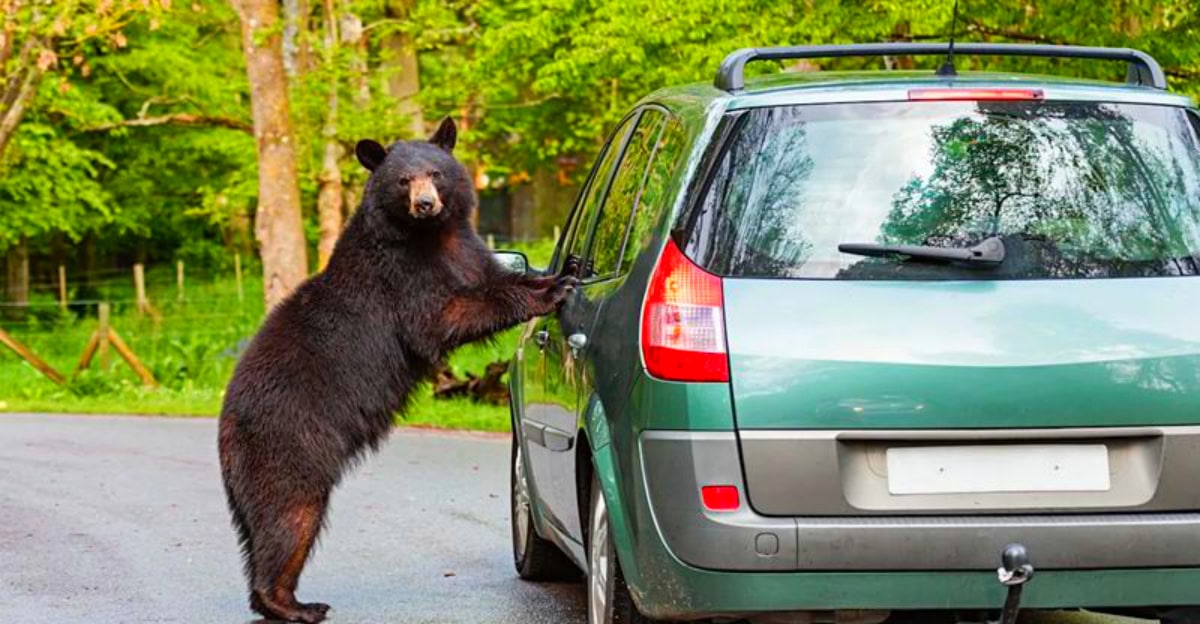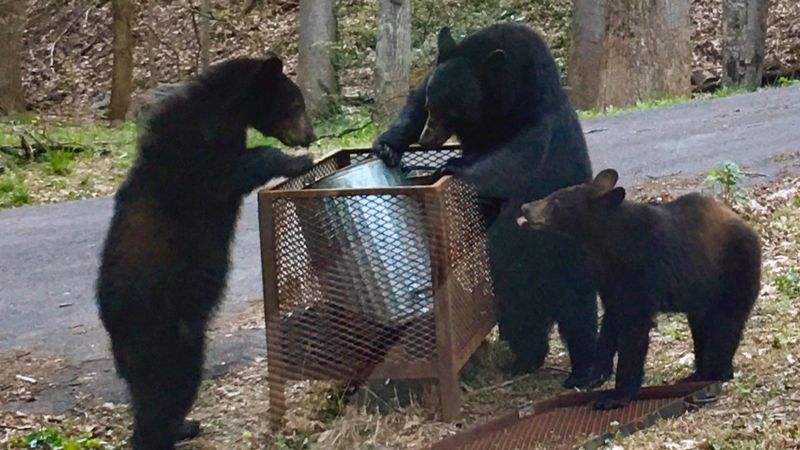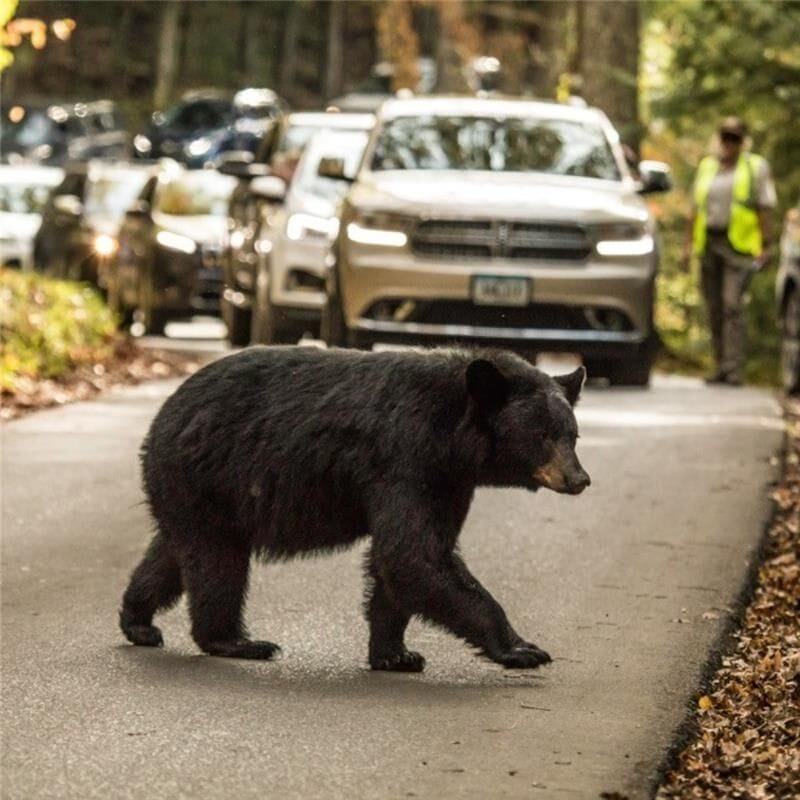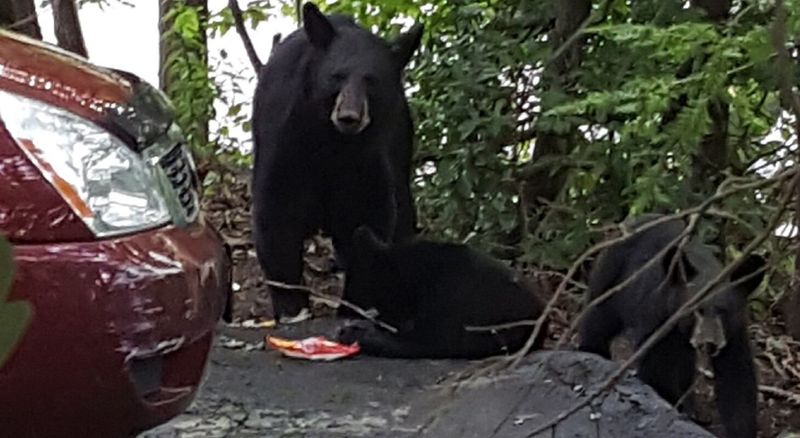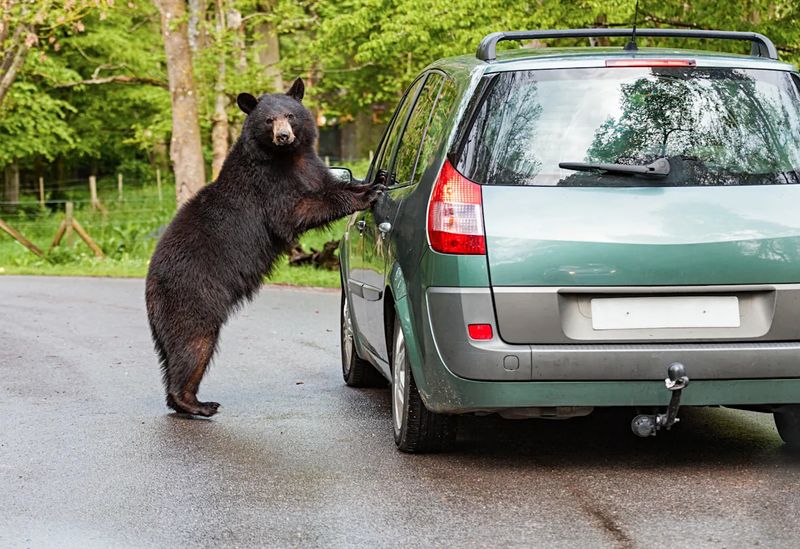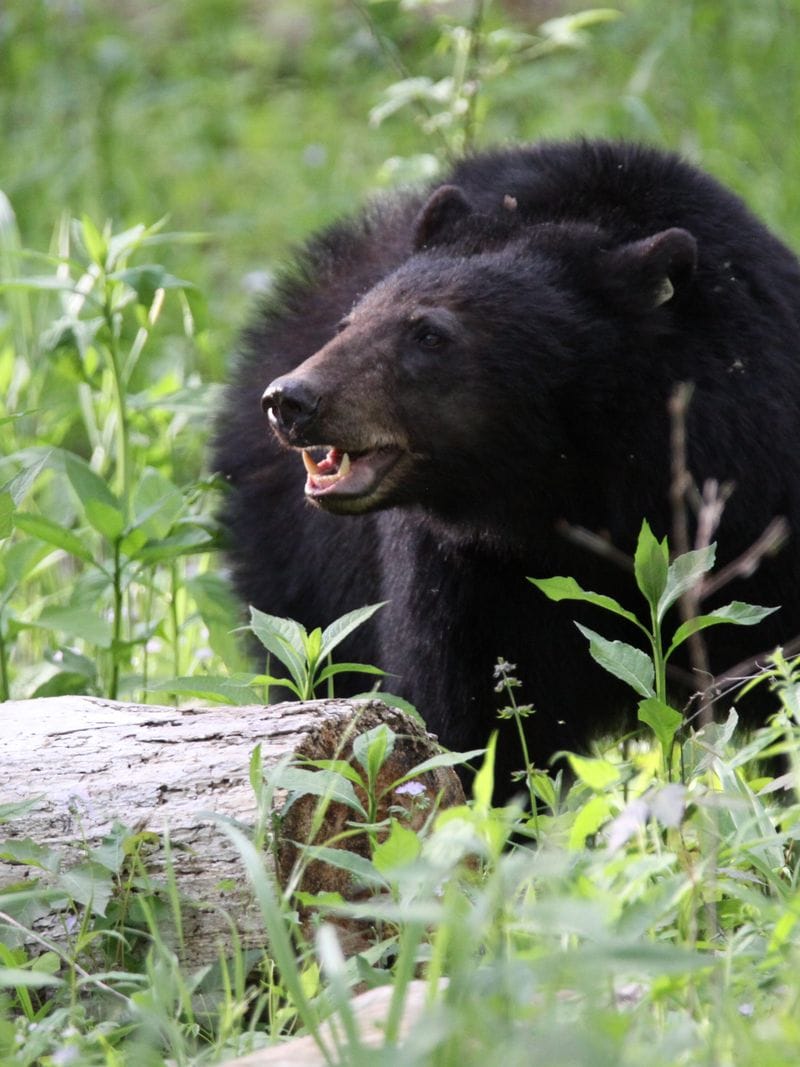Great Smoky Mountains National Park attracts millions of visitors each year who hope to catch a glimpse of the park’s famous black bears. Unfortunately, some well-meaning tourists make a dangerous mistake by offering food to these wild animals. Park rangers continue to issue citations and warnings, but the problem persists with alarming frequency.
1. Recent Incidents Show the Problem Is Getting Worse
Park officials documented three separate feeding incidents in just one week, proving this isn’t an occasional problem. A mother bear and her two cubs at Maloney Point became the center of one particularly concerning case.
Rangers issued citations to the offenders, but the damage was already done. When bears receive food from humans, they quickly learn to associate people with easy meals.
Each incident creates a ripple effect that puts future visitors at risk. Bears have excellent memories and will return to locations where they previously found food from tourists.
2. Federal Penalties Can Ruin Your Vacation Budget
Feeding wildlife in any national park isn’t just frowned upon—it’s a serious federal crime. Violators face fines reaching up to $5,000, which could easily cost more than your entire family vacation.
The legal consequences don’t stop at hefty fines. Offenders can spend up to six months behind bars, turning a fun family trip into a legal nightmare.
Park rangers take these violations seriously because they understand the long-term consequences. What seems like a harmless act of kindness toward a cute bear can result in criminal charges that follow you home.
3. Bears Remember Everything and Change Fast
One small snack from a tourist can permanently alter a bear’s behavior and survival instincts. Bears are incredibly intelligent animals that quickly learn to connect humans with food sources.
This behavioral change makes bears more likely to approach cars, campsites, and hiking trails. Unfortunately, bears that lose their natural fear of humans often become aggressive when food isn’t offered.
Many of these conditioned bears end up getting hit by vehicles or, in the worst cases, must be euthanized by park officials. A single moment of poor judgment by visitors can literally cost a bear its life.
4. The Numbers Create a Perfect Storm
Great Smoky Mountains National Park houses nearly 1,900 American black bears while welcoming around 12 million visitors annually. This creates one of the highest rates of human-bear interactions anywhere in the country.
With so many people and bears sharing the same space, even small mistakes have big consequences. Popular viewing areas become hotspots where problematic encounters are most likely to occur.
The sheer volume of visitors means that even if only a tiny percentage feed bears, the cumulative impact affects the entire bear population. Each feeding incident influences bear behavior park-wide.
5. Timing Makes Everything More Dangerous
Current conditions in the park create an especially risky situation for both bears and visitors. Breeding season increases bear activity levels, making encounters more frequent and unpredictable.
Natural food sources have become scarce, causing hungry bears to venture into visitor areas more often than usual. Young bears are also learning to survive on their own, making them more curious about human food.
These factors combine to create a dangerous environment where bears are more likely to approach people. Feeding them during this critical time can establish harmful patterns that last for years.
